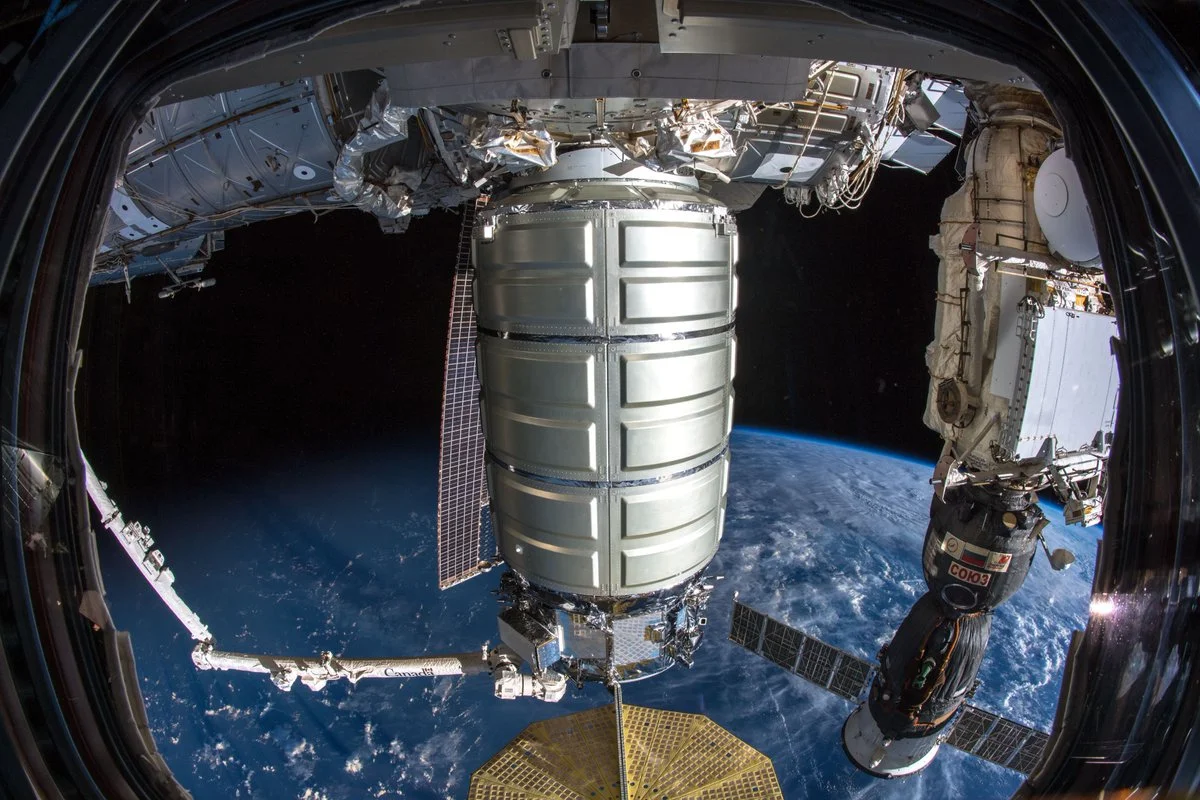NG-10 Cygnus brings experiments, supplies to ISS crew
/Less than 24 hours after Progress MS-10 docked with the International Space Station, Northrop Grumman’s NG-10 Cygnus cargo freighter rendezvoused with the orbiting outpost.
After launching from Wallops Island, Virginia, two days ago, the spacecraft arrived in the vicinity of the ISS in the early-morning hours of Monday, Nov. 19, 2018. Once Cygnus was within 10 meters of the Destiny module, Expedition 57 Flight Engineer Serena Aunon-Chancellor controlled the 17.6-meter-long robotic Canadarm2 to grab the cargo freighter from its free-flight state. Capture was confirmed at 10:28 UTC.
“What a beautiful capture,” Spacecraft Communicator Tamara York radioed from Mission Control Houston. “As we gather this week to celebrate the 20th anniversary of the International Space Station and the spirit of exploration it represents, we celebrate today, the mission of the SS John Young, reaffirming that the spirit of exploration is alive and well today and will be instilled in the generations to come. Congratulations to the NG-10 team.”
The NG-10 Cygnus was named in honor of former astronaut John Young, who flew during the Gemini, Apollo and early space shuttle eras and was NASA’s longest-serving astronaut having been part of the space agency from 1962 to 2004. He died Jan. 5, 2018, in Houston due to complications from pneumonia. He was 87.
Aunon-Chancellor concurred with the accolades, adding her thanks to the multiple people and engineers on the ground who built and launched the commercial spacecraft.
“Cygnus has not only brought us very important cargo for station operations, but also critical science on multiple fronts including tissue on a chip and protein crystal growth, which could help find a cure for Parkinson's disease,” Aunon-Chancellor said. “To John Young’s family and especially Susy [Young’s widow], the Expedition 57 is proud to have the SS John Young with us on orbit. John flew on multiple vehicles from Gemini to Apollo and the space shuttle, and now he is finally flying a long-duration mission on the International Space Station. It is our honor, and we want to thank you for sharing a part of him today.”
The currently-docked visiting vehicles at the International Space Station. Credit: Orbital Velocity
Using the robotic arm, Cygnus was positioned under the Earth-facing port of the Unity module. It was firmly attached at 12:31 UTC. Hatches between the spacecraft and space station are expected to be opened later today following leak checks.
Cygnus brought to the space station some 3,400 kilograms of supplies and research. Experiments aboard include a sensory input in microgravity study, an investigation that will attempt to understand how cement solidifies in various gravity environments using a centrifuge, and research into how simulated-early-solar system dust reacts to a “zap” of electrical current before studying its resulting shape and texture, according to NASA.
Cygnus also includes several CubeSats that will be deployed following the spacecrafts departure from the International Space Station at the end of the NG-10 mission. That is currently anticipated for mid-February 2019.




